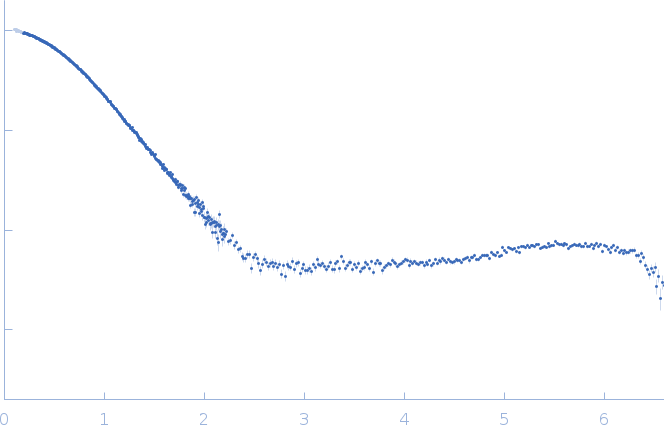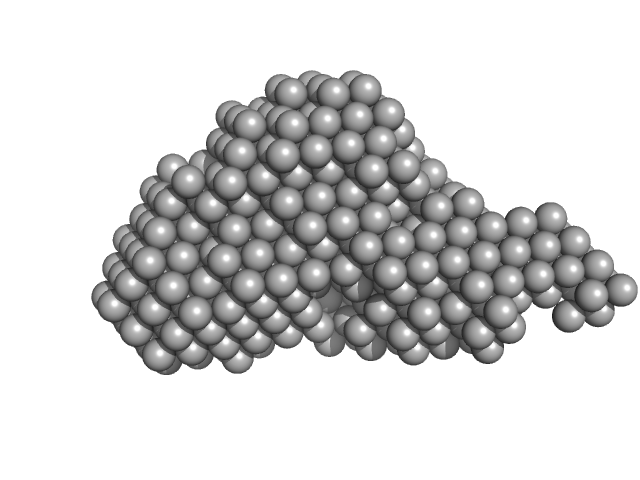|
Synchrotron SAXS data from solutions of Zeitlupe (G46S:G80R) in 50 mM HEPES, 100 mM NaCl, 2 mM TCEP, pH 8 were collected on the G1 beam line at the Cornell High Energy Synchrotron Source (CHESS, Ithaca, NY, USA) using a Pilatus 100K detector at a sample-detector distance of 1.5 m and at a wavelength of λ = 0.12511 nm (I(s) vs s, where s = 4πsinθ/λ, and 2θ is the scattering angle). In-line size-exclusion chromatography (SEC) SAS was employed. The SEC parameters were as follows: A sample at 20 mg/ml was injected at a 0.15 ml/min flow rate onto a GE Superdex 200 Increase 5/150 column at 4°C. The data were normalized to the intensity of the transmitted beam and radially averaged; the scattering of the solvent-blank was subtracted.
Total X-ray exposure time: UNKNOWN.
|
|
 s, nm-1
s, nm-1
